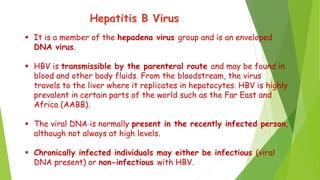Microbial agents that can be transmitted through blood transfusions include viruses like HIV, HBV, HCV, parasites like malaria, and bacteria like syphilis. These pathogens may cause infections that are mild, asymptomatic, or have long incubation periods, making infected donors difficult to identify. Blood screening aims to detect these threats through testing for antigens, antibodies, or nucleic acids, but there is still a risk of transmission during the window period before markers appear or due to laboratory errors. Proper donor selection, screening, and product handling seek to minimize but not eliminate this residual risk.


























